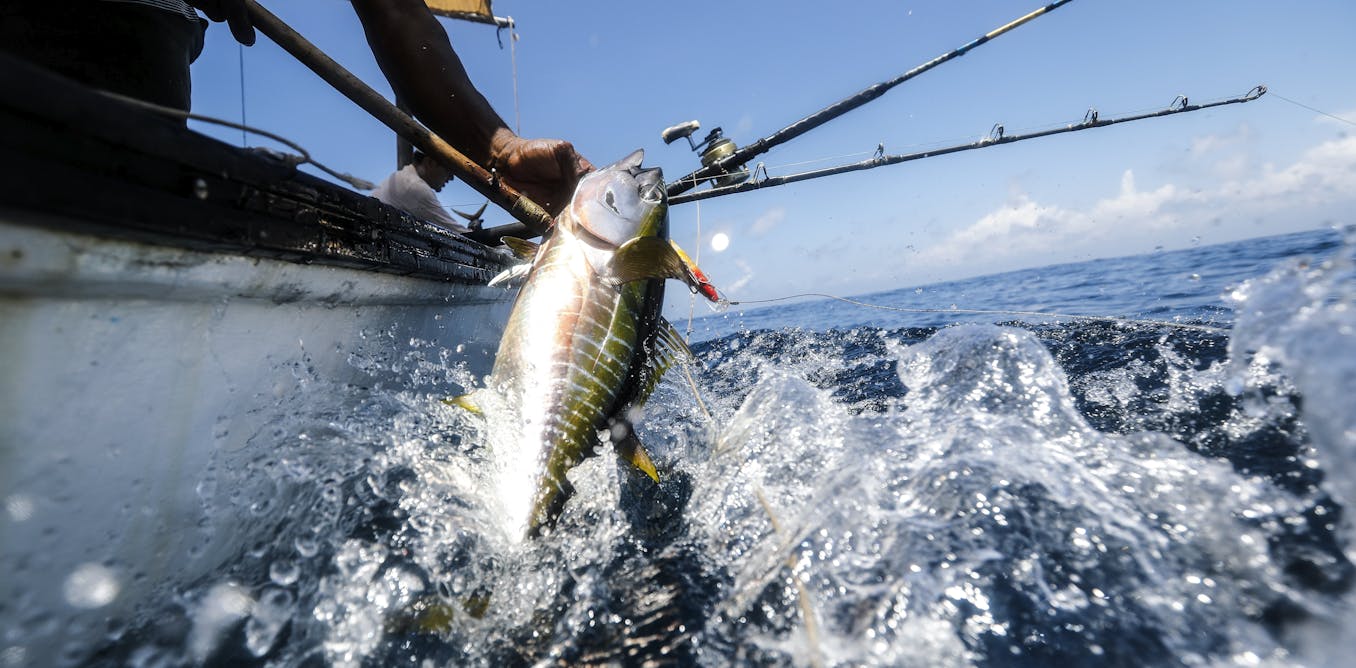Play all audios:
Large fish species are rapidly declining around Australia, according to the first continental diver census of shallow reef fish. Contrary to years of sustainability reports, our study
indicates that excessive fishing pressure is contributing to decline of many Australian fish species. In areas open to fishing, we found that exploited populations fell by an average of 33%
between 2005 and 2015. This rate closely matches the 32% downward trend in total Australian fishery catches through the same period. ------------------------- _ READ MORE: CITIZEN SCIENTIST
SCUBA DIVERS SHED LIGHT ON THE IMPACT OF WARMING OCEANS ON MARINE LIFE _ ------------------------- In contrast, in marine parks where fishing is prohibited, the same species increased by an
average of 25%. Other species not targeted by fishers showed a small downward trend (11% decline in fished zones; 16% decline in no-take marine reserves), indicating that recent marine
heatwaves off southeastern and southwestern Australia have probably adversely affected marine life over a wide area. ------------------------- _ READ MORE: MARINE HEATWAVES ARE GETTING
HOTTER, LASTING LONGER AND DOING MORE DAMAGE _ ------------------------- CITIZEN SCIENCE Our audit of 531 study sites was made possible by combining data from 50-metre long transects
repeatedly surveyed by Australian Institute of Marine Science and University of Tasmania research divers, and by highly trained volunteers participating in the citizen science Reef Life
Survey program. After the collapse of some high-profile fisheries in the 1990s, such as gemfish, orange roughy and southern bluefin tuna, federal and state agencies took a more conservative
approach to fish capture. Australian fisheries are now regarded as among the most sustainable worldwide. ------------------------- _ READ MORE: PLENTY OF FISH IN THE SEA? NOT NECESSARILY, AS
HISTORY SHOWS _ ------------------------- Regardless, the prevalence of downward population trends in our investigation indicates that a reduction in fishing pressure and additional caution
is needed. Otherwise, more Australian fisheries may not be economically viable if this trend continues. Our analysis identified a variety of issues that affect fishery management practices,
many of which are also evident overseas, including: * little relevant data for decision-making related to ecological issues * a lack of no-fishing reference areas to scientifically assess
impacts of fishing * poorly documented stock assessments with limited public accessibility * management decisions made by committees dominated by industry-aligned members * short-term catch
maximisation prioritised over precaution * fishery models that rarely consider species interactions or climate impacts * wider effects of fishing on ecosystems and their resilience to
multiple pressures are overlooked NO-FISHING RESERVES WORK Our study indicates that a highly effective but underused tool in the manager’s toolbox is expanded rollout of no-fishing “marine
reserves”. Despite receiving wide public support, most Australian marine reserves are small and located in areas with few fishery resources. They consequently house few mature, egg-producing
females and do little to assist in the rebuilding of overfished stocks. Nor are they likely to help much in the recovery of important ecosystem functions, as needed for fished-species
populations to rebound after climate shocks and other pressures. The July rollout of Australian Marine Parks, in particular, represents a lost opportunity that may prove a significant
problem for fishers. Although covering 2.76 million square kilometres – the largest marine park in the world – it is of limited conservation value. ------------------------- _ READ MORE:
AUSTRALIA’S NEW MARINE PROTECTED AREAS: WHY THEY WON'T WORK _ ------------------------- Through three rounds of public submissions, each largely aimed at minimising any remaining
overlap with current fishing activities, the final zoning plans affect very few stakeholders. The outcome is neither an efficient nor effective solution to the actual problem of protecting
the oceans. For example, the Temperate East Zone covering waters from the Victorian border to southern Queensland includes no new “no-take” reserves shallower than 1,000m depth, although
these waters are where virtually all fishing impacts occur in this region. The widespread declaration of marine parks that allow current fishing to continue is perhaps useful when harmful
fishing practices for ecosystems are excluded. However, our study indicates that this basic assumption does not apply to Australian Marine Parks. ------------------------- _ READ MORE: MORE
THAN 1,200 SCIENTISTS URGE RETHINK ON AUSTRALIA'S MARINE PARK PLANS _ ------------------------- The environmental and economic debt for future generations is both huge and unfair.

